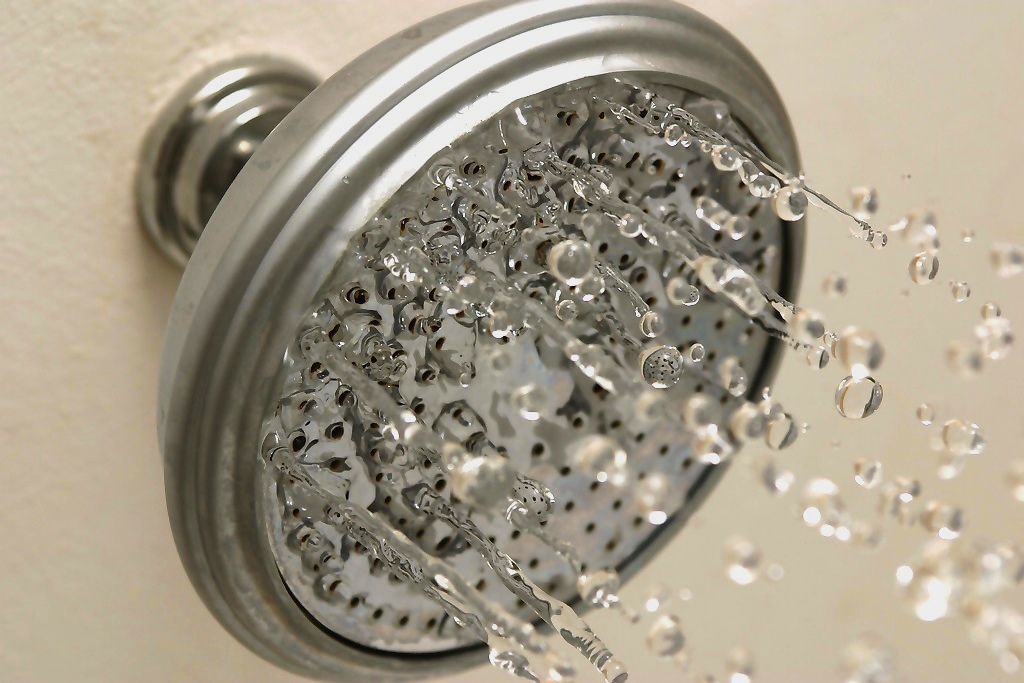Shower
The Building Regulations Approved Document G: Sanitation, hot water safety and water efficiency, suggests that the term ‘sanitary appliance’ means a ‘… WC, urinal, bath, shower, washbasin, sink, bidet and drinking fountain. It also includes appliances that are not connected to a water supply (e.g. composting toilet) or drain (e.g. waterless urinal).’
Under these regulations, sanitary appliances collect and remove waste matter and are generally grouped into two categories: soil appliances and wastewater appliances. Wastewater appliances are primarily used to collect and remove water once it has been used. A shower is considered a type of wastewater appliance under this definition.
The Scottish Building Standards, Part I. Technical Handbook – Domestic, Appendix A Defined Terms, defines a shower as a sanitary accommodation or a sanitary facility.
Showers are typically cubicles with a drain at the bottom, and a fixed shower head, or a shower head attached to a flexible hose, that produces a spray of water that allows users to clean themselves. They might be connected to a hot and cold water supply wth a mixer valve to control the temperature, or they may have an electric heater that allows cold water to be heated instantaneously. Shower appliances might also be installed in wet rooms, or attached to the taps of a bath.
For more information see: Types of showers.
The word 'shower' might also refer to a brief period of light rain, snow or hail.
NB The Illustrated Guide to Hot and Cold Water Services (BG 33/2014), written by Reginald Brown and published by BSRIA in 2014, it states: ‘Basic electric showers incorporate a heating element but rely on the cold water supply pressure. Power showers include an integral pump for use with low water supply pressures.’
[edit] Related articles on Designing Buildings
- Approved Document G.
- Approved document M.
- Bath.
- Bidet.
- Lavatory.
- Level access shower
- Sanitary accommodation.
- Sanitaryware.
- Shower vs bath
- Types of sanitary appliances.
- Types of showers.
- Waste water.
- Wet room.
[edit] External resources
Featured articles and news
RTPI leader to become new CIOB Chief Executive Officer
Dr Victoria Hills MRTPI, FICE to take over after Caroline Gumble’s departure.
Social and affordable housing, a long term plan for delivery
The “Delivering a Decade of Renewal for Social and Affordable Housing” strategy sets out future path.
A change to adoptive architecture
Effects of global weather warming on architectural detailing, material choice and human interaction.
The proposed publicly owned and backed subsidiary of Homes England, to facilitate new homes.
How big is the problem and what can we do to mitigate the effects?
Overheating guidance and tools for building designers
A number of cool guides to help with the heat.
The UK's Modern Industrial Strategy: A 10 year plan
Previous consultation criticism, current key elements and general support with some persisting reservations.
Building Safety Regulator reforms
New roles, new staff and a new fast track service pave the way for a single construction regulator.
Architectural Technologist CPDs and Communications
CIAT CPD… and how you can do it!
Cooling centres and cool spaces
Managing extreme heat in cities by directing the public to places for heat stress relief and water sources.
Winter gardens: A brief history and warm variations
Extending the season with glass in different forms and terms.
Restoring Great Yarmouth's Winter Gardens
Transforming one of the least sustainable constructions imaginable.
Construction Skills Mission Board launch sector drive
Newly formed government and industry collaboration set strategy for recruiting an additional 100,000 construction workers a year.
New Architects Code comes into effect in September 2025
ARB Architects Code of Conduct and Practice available with ongoing consultation regarding guidance.
Welsh Skills Body (Medr) launches ambitious plan
The new skills body brings together funding and regulation of tertiary education and research for the devolved nation.
Paul Gandy FCIOB announced as next CIOB President
Former Tilbury Douglas CEO takes helm.
UK Infrastructure: A 10 Year Strategy. In brief with reactions
With the National Infrastructure and Service Transformation Authority (NISTA).























